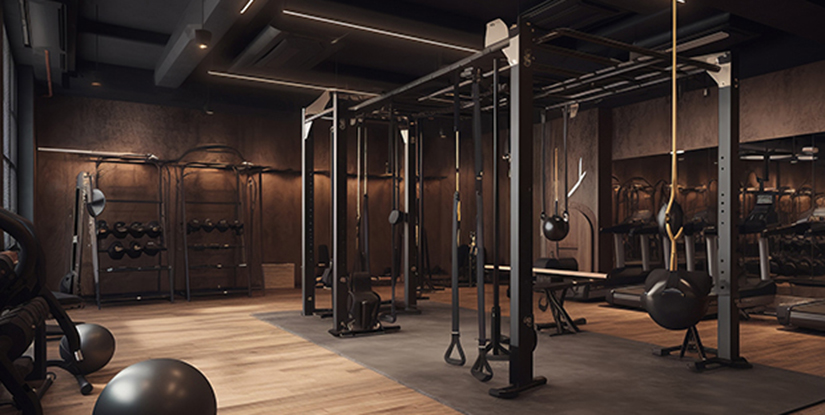Weight Fitness Equipment: Guide to Selection, Safety & Use

Overview of Weight Fitness Equipment
Weight fitness equipment forms the foundation of strength training, rehabilitation, and athletic conditioning. Proper selection and use of free weights, machines, and functional tools optimize muscle recruitment, improve movement patterns, and reduce injury risk. This guide presents practical, professional advice on types, selection criteria, safety, maintenance, and implementation for gyms and home training spaces.
Core Categories
- Free weights: dumbbells, barbells, kettlebells — ideal for multi-planar, compound movements and stabilizer recruitment.
- Weight machines: selectorized and plate-loaded machines — provide guided movement and are helpful for technique learning and load isolation.
- Functional equipment: sandbags, sleds, medicine balls — used for power, conditioning, and sport-specific transfer.
- Accessory tools: benches, racks, platforms, collars, resistance bands — necessary for safe and versatile programming.
Matching Equipment to Training Goals
Choice depends on objectives and context. For maximal strength and hypertrophy prioritize barbells, adjustable dumbbells, power racks, and calibrated plates. For rehabilitation and beginners, selectorized machines and lighter adjustable dumbbells facilitate controlled progress. For athletic development, include kettlebells, plyometric boxes, and sleds to train power and speed.
Space, Budget, and Scalability Considerations
Assess available space and long-term scalability. Commercial-grade equipment costs more but endures heavy daily use. For home gyms, prioritize multifunctional items: an adjustable bench, power rack, barbell, and a set of plates. Modular systems and adjustable dumbbells maximize versatility in limited footprints.
Safety and Ergonomics
- Inspect racks, pins, and welds for structural integrity before purchase.
- Use safety pins or spotter arms with heavy lifts; never lift maximal loads without supervision or spotters.
- Choose properly sized equipment for user anthropometry — handle diameters, bench width, and rack height affect biomechanics.
- Maintain non-slip flooring and adequate clearances around equipment to prevent accidents.
Maintenance and Longevity
Routine maintenance extends service life and ensures safety. For steel equipment, clean and lubricate moving parts, tighten bolts quarterly, and inspect cables and pulleys for fray. Rubber-coated plates and bumper plates require regular cleaning to remove sweat and grime; storage on racks prevents warping. Keep an inventory and service log for commercial operations.
Programming with Weight Equipment
Integrate equipment into periodized plans. Use compound barbell lifts (squat, deadlift, press) as primary strength stimuli. Supplement with unilateral dumbbell work to address imbalances. Machines can be used for high-volume accessory work with reduced technical demand. Functional tools should be scheduled for power and conditioning blocks.
Buying Tips and Specifications
- Prioritize steel gauge and weld quality for racks and frames.
- Check plate calibration if precise loading is required for testing or competition.
- Test ergonomics in person: grip comfort, seat adjustments, and range of motion.
- Factor in shipping, installation, and warranty terms.
Sample Starter List for a Home Gym
- Power rack with safety arms
- Olympic barbell and set of calibrated or fractional plates
- Adjustable flat/incline bench
- Adjustable dumbbells or kettlebell set
- Pull-up bar, resistance bands, and conditioning sled or jump rope
Conclusion
Weight fitness equipment is an investment in performance and health. Select items aligned with goals, space, and budget. Prioritize durability, ergonomics, and safety features. With appropriate selection, regular maintenance, and structured programming, equipment will deliver consistent, measurable progress for users at every level.
FAQs
- Q: What are the best starter pieces? A: Power rack, barbell, plates, bench, and adjustable dumbbells.
- Q: Free weights or machines? A: Both; free weights for stability and transfer, machines for isolation and safety.
- Q: How to ensure equipment safety? A: Regular inspections, tighten hardware, use spotters or safety arms.
- Q: How often to service equipment? A: Visual checks weekly; full maintenance quarterly.
- Q: Are calibrated plates necessary? A: For precise testing and competition, yes; otherwise standard plates suffice.
- Q: What flooring is best? A: Dense rubber tiles or mats that absorb impact and protect subfloor.
- Q: How to choose between bumper and iron plates? A: Bumper plates for Olympic lifts and dropping; iron for general loading and cost-efficiency.
- Q: Is a commercial-grade rack worth it for home use? A: If you lift heavy and value longevity, yes; otherwise mid-range is adequate.
- Q: How to budget for a gym setup? A: Prioritize core items first; expect 40–60% of total budget on rack, barbell, and plates.

